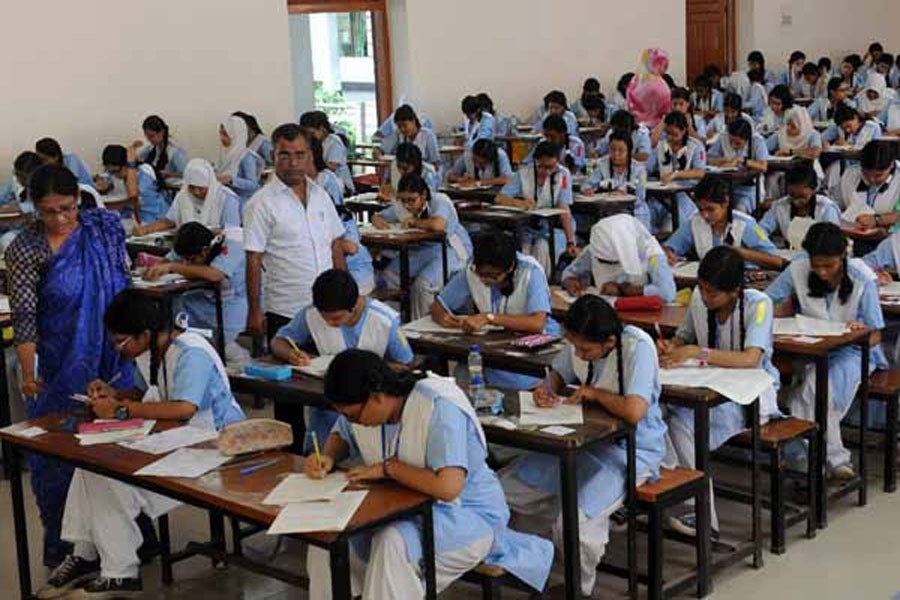The just published results of both the Junior School Certificate (JSC) including its equivalent examinations and the Primary Education Completion Examinations (PECE) together with its equivalent exams have registered marked improvement on last year's achievement. However, on grade point average (GPA) -5 score, the JSC results have been highly disappointing. This year the number of GPA-5 achievers has dropped radically to 66,108 --almost one-third of last year's 184,397. Apart from this blemish, the results are quite encouraging in terms of pass rates. If the JSC's GPA-5 achievers have come down, the PECE and its equivalent exams have produced a greater number of GPA-5 achievers than that of its previous year. What is particularly relishing is the pass rate in English for the PECE examinees-it has recorded a rise from last year's 97.5 per cent to 99.10 per cent this year. A far better performance by girls in pass rate and GPA-5 achievement than boys may be a cause for double delight.
Notably, the abrupt drop of GPA-5 achievers in the JSC examination does not indicate a sudden paucity of talents for this year's batch. The main reason for the decline in the number of GPA-5 here is the exclusion of fourth subjects. On the advice of education experts exams were held on one paper Bangla and English instead of two -as was the practice previously. There was scope for making up for deficiency for the first paper with the number of the second paper. This year the examinees sat for 100 marks in these two subjects instead of 200 each. Then the fourth paper's additional marks would have contributed to enhance the score of the grade point average. With that facility taken away, examinees have to score no fewer than 80 marks in order to achieve GPA-5.
Some guardians have naturally expressed disappointment over their wards' failure to hit the benchmark on account of removal of the fourth paper facility. The near miss is likely to dampen the spirit of the young examinees. Responsible for such abrupt rise and fall in results of public examinations is nothing else but the frequent policy change in and experiments with syllabi, system of evaluation of answer script -sometimes liberal and at other times stringent -and even in the methods of question setting. Educationists, in the first place, are against holding as many public examinations for the young learners. Paying no heed to their expert opinions, bureaucrats at the helm of affairs are dead set to continue the needlessly repressive examinations.
The public examinations may indeed have some positive outcome in a way of taking the primary education seriously as against lax approach to it of the past. But ideally what it should have been is missed by miles. Today commercial coaching has made its inroads into primary education where learning is secondary to acquiring techniques to score higher marks in exams. Teachers not adequately qualified to teach students have been recruited and even those capable of teaching well in classrooms reserve their energy and aptitude for coaching centres. Education not only at the secondary and higher secondary levels but also at primary and junior levels has been thus maligned and vitiated. A pragmatic approach to put education in its proper place is well in order.


